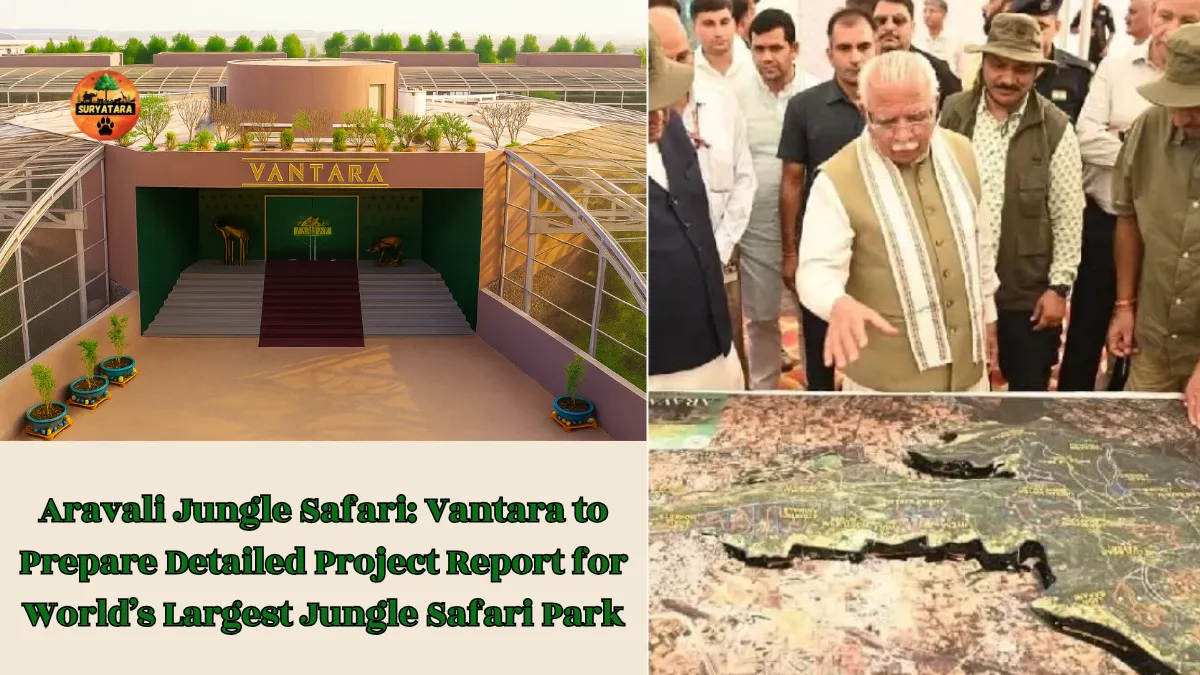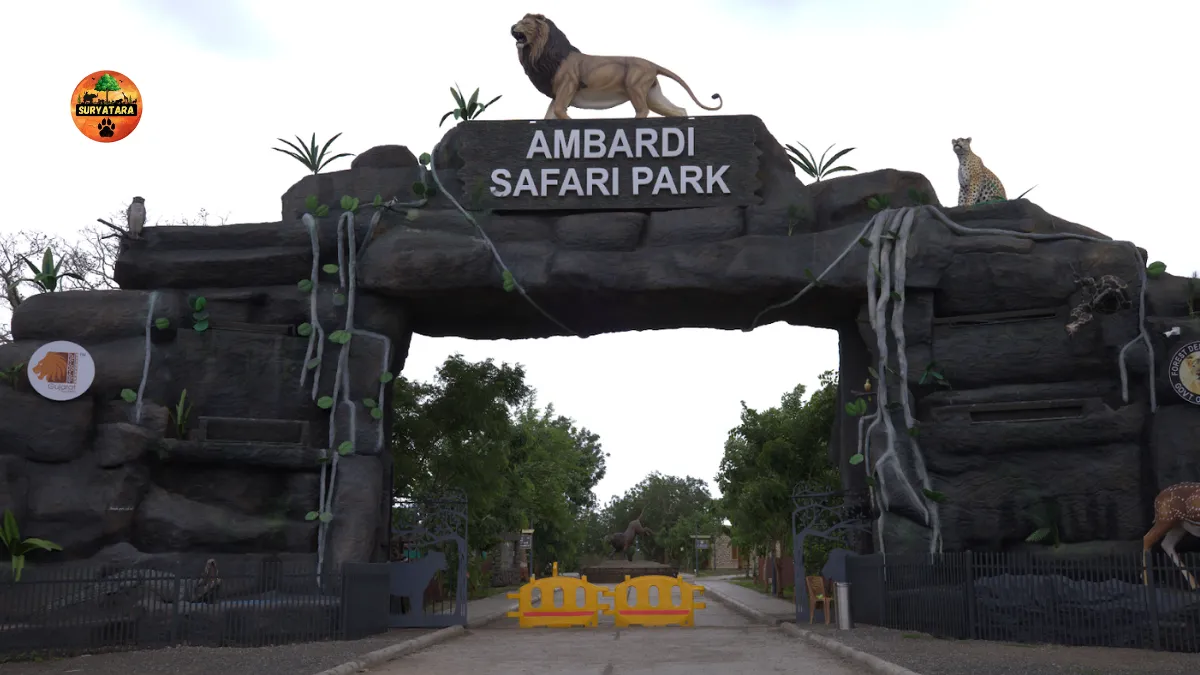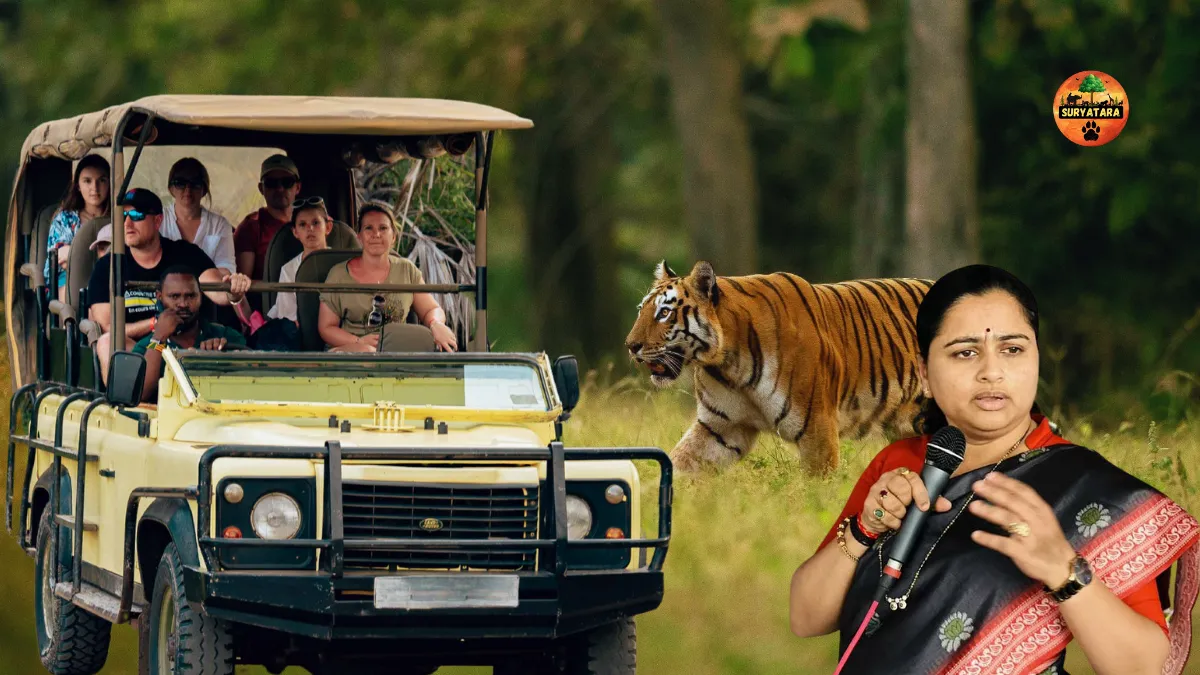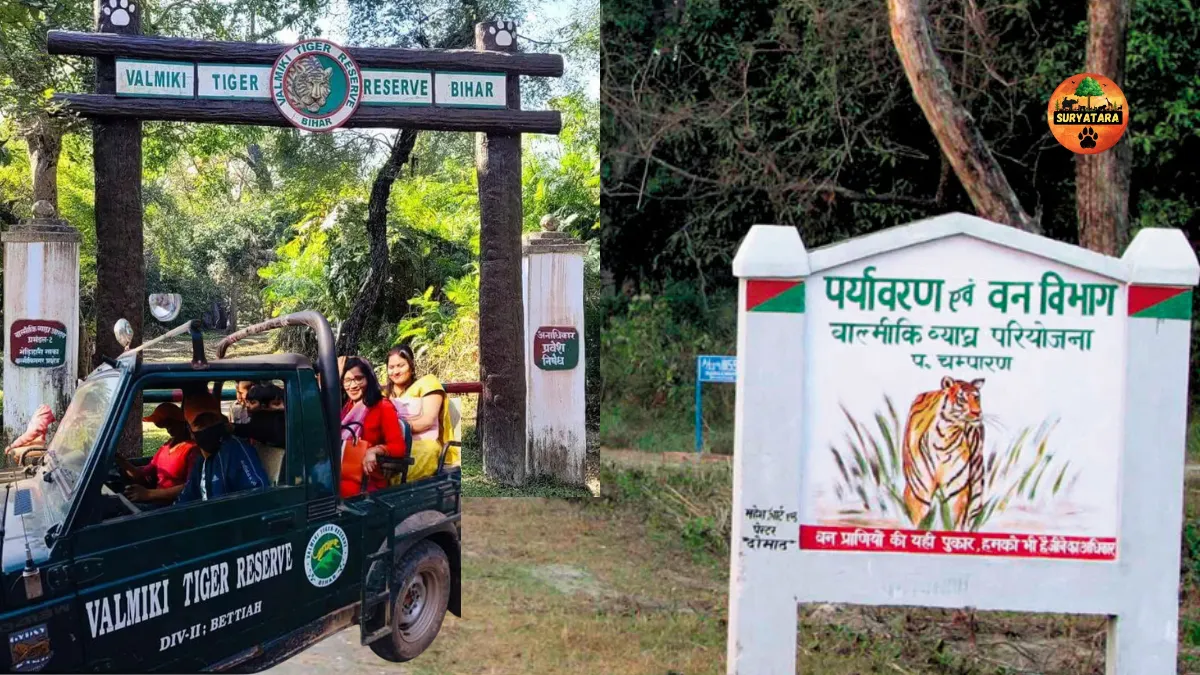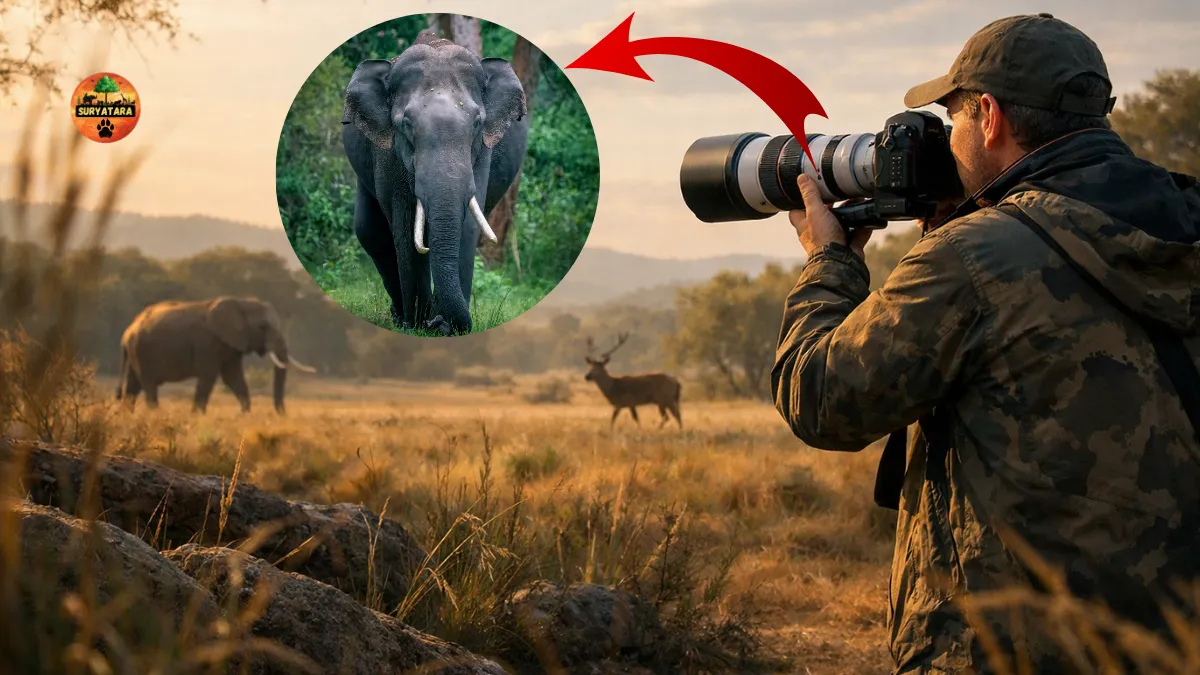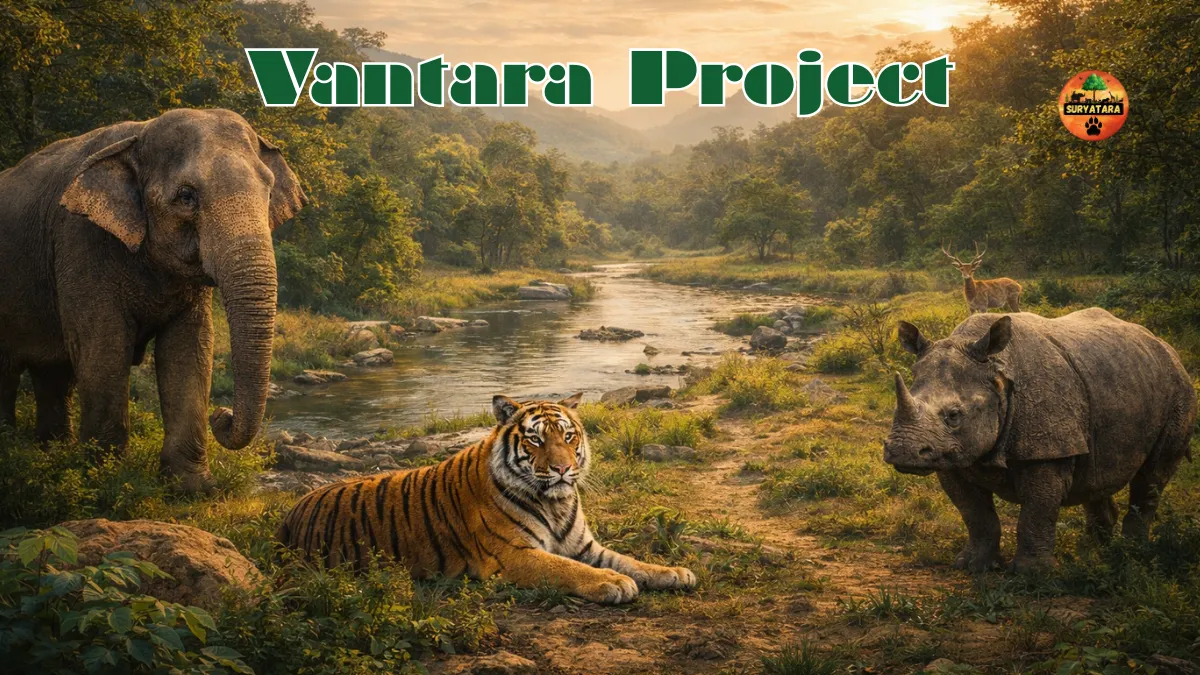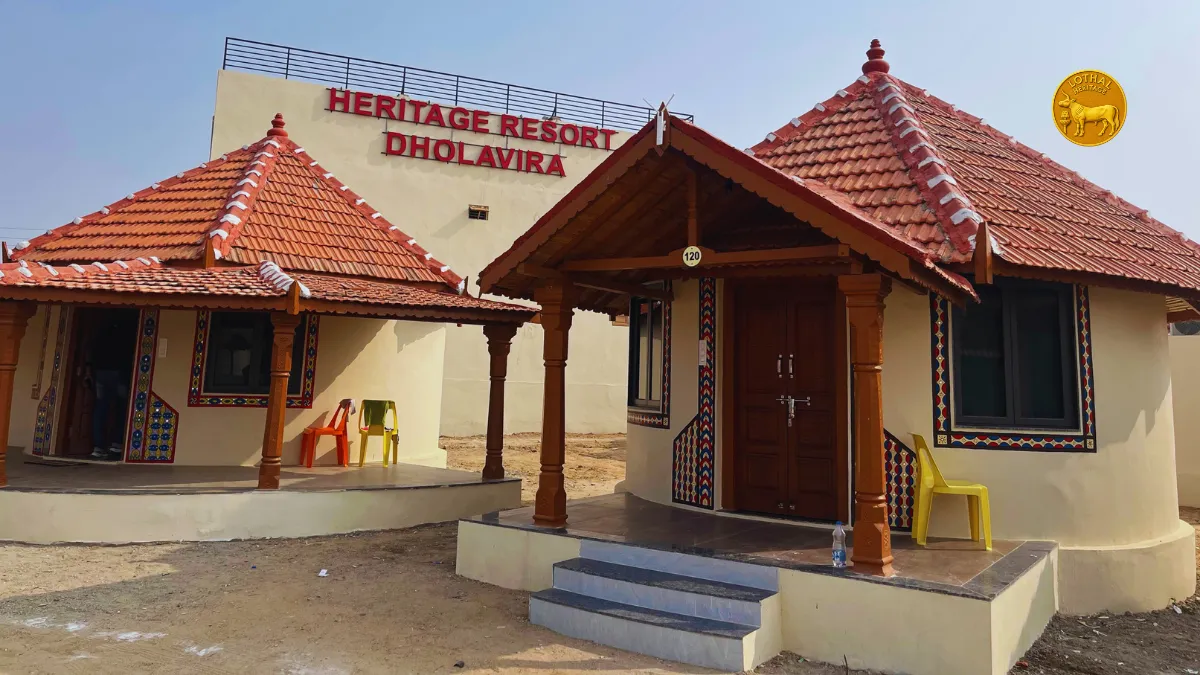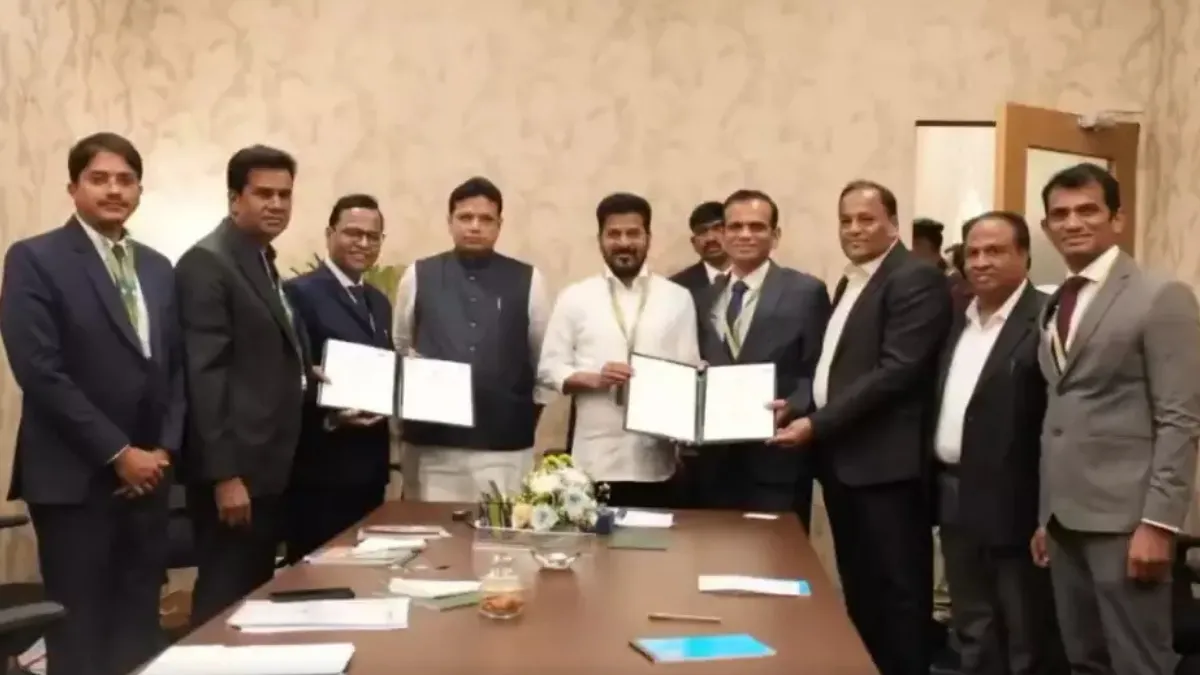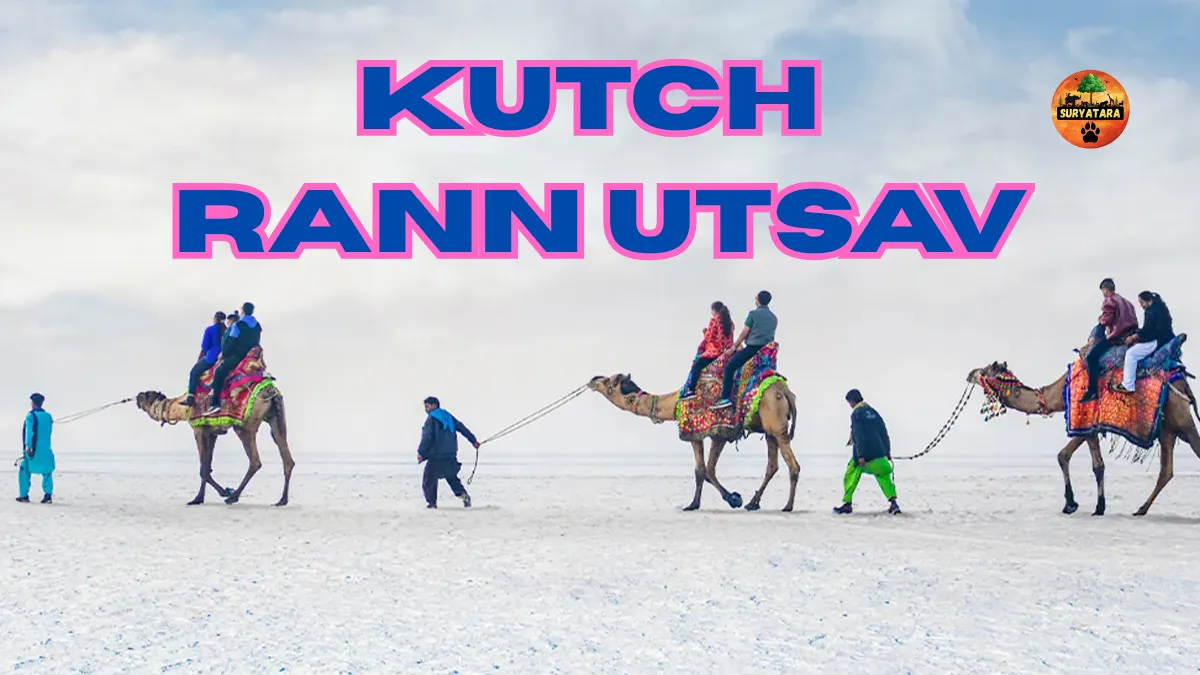Aravali Jungle Safari is set to become the world’s largest jungle safari park, spread across a vast expanse of 10,000 acres in the picturesque Aravali hills of Gurugram and Nuh districts, Haryana. This ambitious eco-tourism and wildlife conservation project is now taking shape with the involvement of the renowned Vantara team, known for their expertise in creating world-class animal welfare and rehabilitation centres.
The Haryana government has entrusted Vantara, a project by Reliance Group led by Anant Ambani, with the crucial task of preparing the Detailed Project Report (DPR) for this monumental jungle safari park. The Vantara team has already conducted an initial inspection of the proposed site, laying the foundation for a project that aims to redefine wildlife tourism and conservation on a global scale.
Vantara’s Expertise to Shape Aravali Jungle Safari
Vantara’s selection for this project is a strategic move. Vantara, located in Jamnagar, Gujarat, is a globally recognized wildlife rescue and rehabilitation centre spread over 3,000 acres. It is home to a wide variety of wildlife species and serves as a sanctuary and hospital for rescued and injured animals. The facility combines scientific research, animal welfare, and eco-tourism in a model that is now being looked upon as a blueprint for Aravali Jungle Safari.
With this experience, Vantara’s team is expected to prepare a DPR that not only meets international standards but also addresses ecological sensitivity, wildlife needs, and tourism infrastructure. The team is likely to study the preliminary designs prepared by the Haryana Forest Department, which have been crafted to ensure that animals live in large, naturalistic enclosures, ranging from 50 to 100 acres each. Each enclosure will house four to five compatible wildlife species, ensuring both their safety and visitor engagement.
Central Ministers Conducted Ground-Level Inspection
To ensure that the project proceeds flawlessly, key central and state leaders visited the proposed site. Union Power Minister Manohar Lal, Union Environment Minister Bhupender Yadav, and Haryana’s Forest and Environment Minister Rao Narbir Singh personally inspected the location. They examined the terrain, assessed the feasibility of constructing wildlife enclosures, and identified key zones where various species can be accommodated.
The central ministers expressed confidence that Aravali Jungle Safari could become one of the most attractive safari parks in the world. Union Minister Bhupender Yadav assured that the Central Government would extend its full support to the project, recognizing its potential in wildlife conservation, eco-tourism, and regional development.
Four-Phase Development Plan for Aravali Jungle Safari
The development of Aravali Jungle Safari is planned in four systematic phases, with each phase covering around 2,500 acres. This phased approach ensures that the project will be meticulously planned and executed, allowing for constant monitoring, feedback, and adjustments. The Haryana government is keen to begin on-ground work soon, with DPR preparation being the immediate priority.
Rao Narbir Singh, Haryana’s Forest and Environment Minister, believes that involving the Vantara team is crucial to achieving global excellence. He emphasized that Vantara’s expertise in creating a sanctuary of international standards would be pivotal in making Aravali Jungle Safari a global attraction.
Focus on Wildlife Welfare and Eco-Tourism
One of the key highlights of the safari park will be a dedicated wildlife hospital, modeled after Vantara’s facilities in Jamnagar. This hospital will ensure timely medical care and rehabilitation for injured or rescued animals within the park. By integrating conservation with tourism, the safari park aims to raise awareness about wildlife protection while also promoting sustainable eco-tourism.
Union Minister Manohar Lal highlighted that the Aravali mountain range’s natural beauty, biodiversity, and historical heritage will be preserved and enhanced through this project. The safari park is expected to become a major tourist attraction, featuring world-class amenities designed to offer a safe and enriching experience for both wildlife and visitors.
The project will also contribute significantly to local employment generation. From construction jobs during the initial phases to long-term opportunities in park management, eco-tourism services, and conservation efforts, Aravali Jungle Safari is poised to become an economic booster for the region.
Eco-Friendly Development with Indigenous Vegetation
A unique aspect of the Aravali Jungle Safari project is its commitment to ecological restoration. The plan involves the removal of invasive species like Vilayati Babul (Prosopis juliflora) in a controlled and phased manner. This will pave the way for the re-introduction of native flora, restoring the Aravali hills’ natural ecosystem. Each tree will be carefully removed with minimal ecological disruption, ensuring that the area retains its green cover while enhancing its biodiversity.
The safari park will have four main entry gates strategically located for easy access. These gates will be situated near Sohna on the Delhi-Mumbai Expressway, Tawddu-Sohna Road, near Naurangpur, and Sakatpur village. These entry points will be equipped with visitor facilities, eco-tourism information centres, and transportation services to navigate the expansive safari zones.
Also read:Aravalli Jungle Safari: Transforming Haryana into an Eco-Tourism Hub
A Model for Future Wildlife Conservation Projects
The Aravali Jungle Safari project is not just about creating another tourist attraction; it is envisioned as a model for future wildlife conservation projects across India and the world. By blending scientific wildlife management, eco-tourism, education, and local community engagement, the park seeks to create a sustainable ecosystem where human interests and wildlife protection coexist harmoniously.
With the involvement of Vantara, the project gains credibility and a proven methodology. Vantara’s experience in handling diverse species, creating safe habitats, and managing large-scale eco-friendly infrastructure will be crucial in making Aravali Jungle Safari a success story.
Also read: Green Wall Project: Haryana’s 10,000-Acre Jungle Safari Set to Become World’s Largest
Key Details of Aravali Jungle Safari Project
| Feature | Details |
|---|---|
| Project Name | Aravali Jungle Safari |
| Location | Gurugram and Nuh districts, Haryana |
| Total Area | 10,000 Acres |
| Project Developer | Vantara Team (Reliance Group) |
| Development Phases | 4 Phases (2,500 Acres Each Phase) |
| Key Features | Wildlife Enclosures, Hospital, Eco-tourism Facilities |
| Entry Gates | Sohna (Delhi-Mumbai Expressway), Tawddu-Sohna Road, Naurangpur, Sakatpur |
| Central Government Involvement | Assured support for development & funding |
| Environmental Initiatives | Removal of Vilayati Babul, Restoration of Native Vegetation |
| Employment Opportunities | Local Jobs in Construction, Tourism, Wildlife Management |
Also read: Asia’s Largest Jungle Safari in Aravalli Hills to Be Developed in Haryana
Conclusion
The Aravali Jungle Safari project, with Vantara’s expertise, is poised to become a landmark destination that showcases India’s commitment to wildlife conservation, eco-tourism, and sustainable development. By combining world-class facilities with ecological sensitivity, this safari park will not only protect endangered species but also offer a unique experience to visitors from around the globe. With strong support from both state and central governments, the dream of developing the world’s largest jungle safari park in the heart of Haryana’s Aravali hills is steadily turning into a reality.
